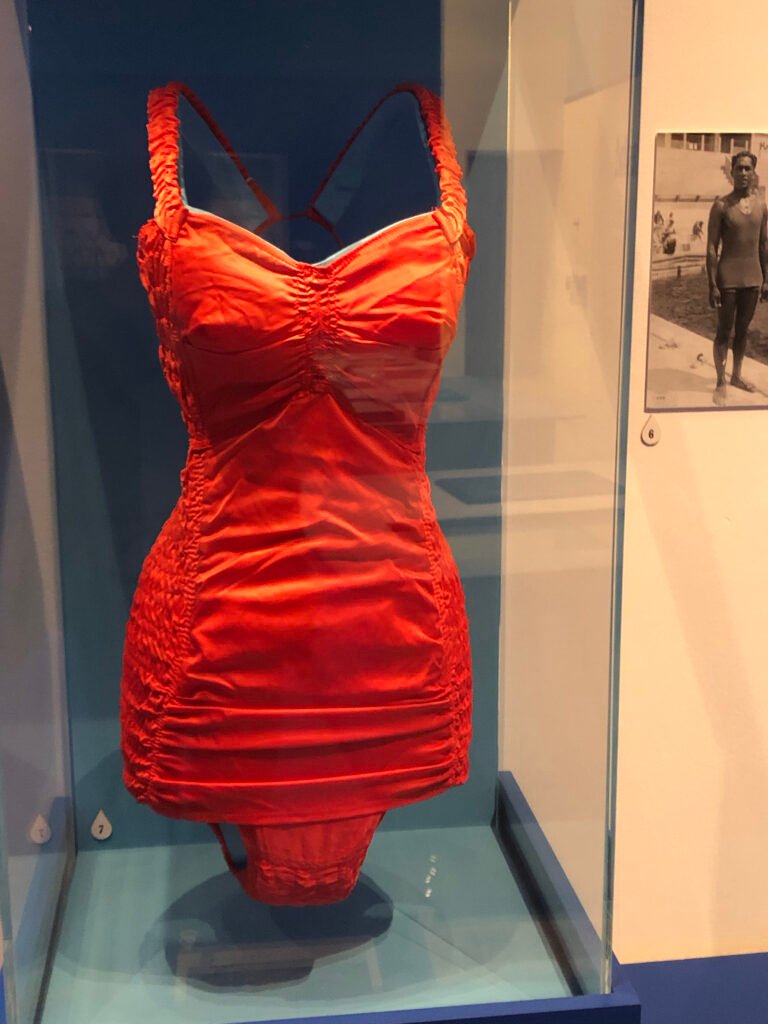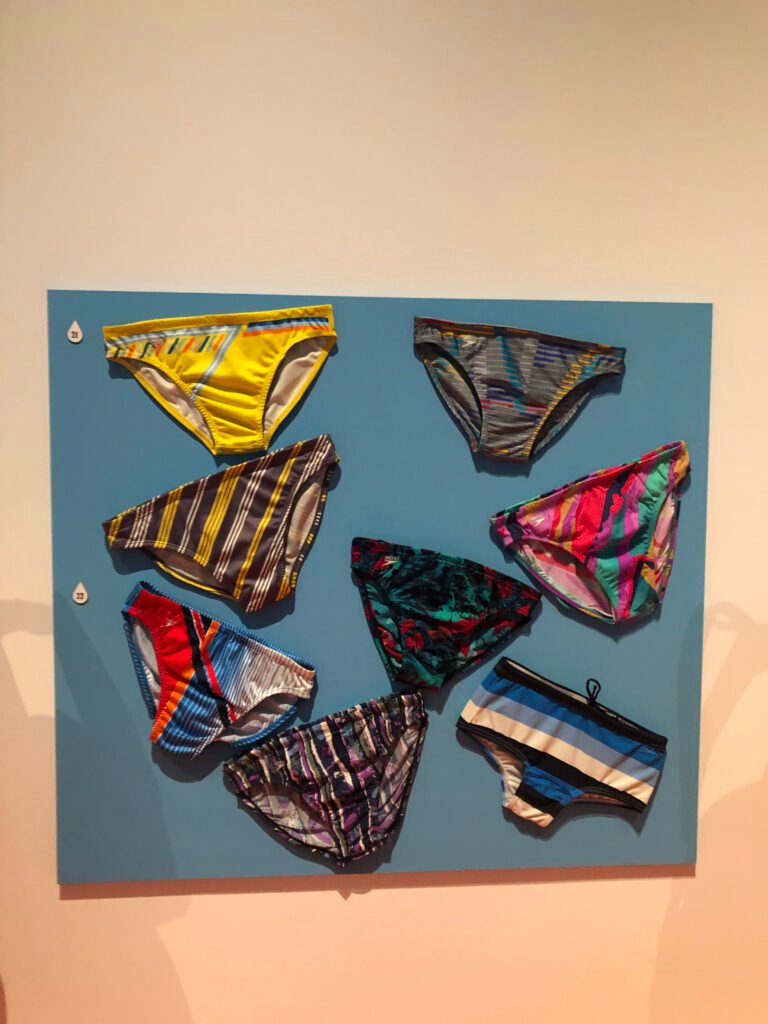Styles of every sort of clothing have evolved over time and the same goes for swimwear, an aspect of fashion dealt with in a London exhibition called Splash!: a Century of Swimming and Style. Swimsuits were initially marketed for bathing, rather than for something as exerting as actually swimming. But over the past century and more in the UK, seaside holidays have become part of the national psyche, something which nothing did more to promote than the national rail network and later the motor car. People could thus more easily travel to the coast from the places where they lived and worked.

The single most iconic item of swimwear is surely the bikini (a photo of one is on the homepage). In 1946, a French designer named Louis Reard revealed (I think that must be the correct word) a two-piece swimsuit he had created. Less than a week before its debut appearance in Paris, a nuclear bomb had been detonated over the Pacific islands of Bikini Atoll. Reard thought the name was a splendid one to bestow on his flimsy garment because the idea was that while the outfit did not require much material, the impact would be explosive. And so the bikini was born. The first one is shown at this exhibition; it looks less than stunning to the modern eye but it was the first swimming costume to show a female navel.

And, it has to be said, that bikini does look less ‘formal’ than the swimsuit worn to victory by Judy Grinham at the 1956 Olympic Games (pictured at top). Also on the less-formal side are the infamous Speedo swimming trunks, designed by Peter Travis (another Aussie) in the late 1950s and the cause of much sensation when they started to be regularly flaunted on Australian beaches. It was not difficult to see why they came to acquire the nickname of ‘budgie smugglers’. And talking of Olympic champions, Mark Spitz of the United States won multiple gold medals while sporting them during the Munich Games of 1972.

Of course, it wasn’t only at the coast where swimming could be relished. Many councils built open-air pools, known as lidos, named for the Lido in Venice, which was/is a beach destination for the wealthy. (Hey, maybe Jeff Bezos and Lauren Sanchez are there right now!?) This process also occurred at beach resorts, with the development of holiday camps like Billy Butlin’s. They were popular 100 years ago and they are today – very much so, actually, given the weather we have been enjoying lately. Anyhow, Splash! is on at the Design Museum, London, until August 17.
